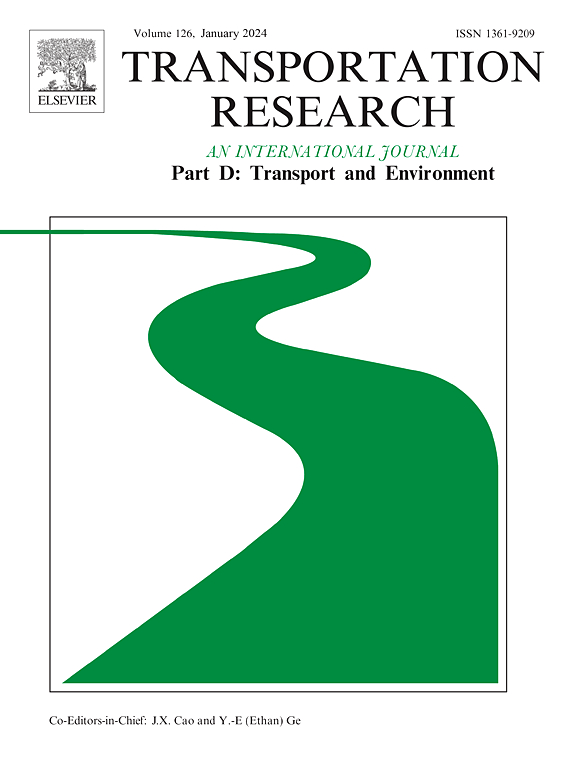共享微交通对中等城市公共交通的空间溢出效应
IF 7.7
1区 工程技术
Q1 ENVIRONMENTAL STUDIES
Transportation Research Part D-transport and Environment
Pub Date : 2025-07-25
DOI:10.1016/j.trd.2025.104923
引用次数: 0
摘要
共享微型交通(SMM)的快速发展正在改变中等城市的城市交通。本研究采用动态空间Durbin模型,考察了中国盐城市公共交通中电动自由浮动共享单车(Floating E-Bike)、自由浮动共享单车(Floating Bike)和基于站点的共享单车(Station Bike)对公共交通客流量的影响。研究结果显示了显著的空间溢出效应,强调了在运输分析中考虑相互依赖的必要性。浮动电动自行车的使用量每增加1%,公交客流量就会下降0.53%,而其他两种模式则呈正相关。土地利用分析表明,商业区域的直接效应为负,溢出效应为正,而就业区域则相反。相比之下,教育和居住区一直产生积极的影响。包括人口密度和房价在内的社会经济因素也影响着公交客流量。异质性分析表明,盐城历史核心区域由于停车受限,限制了SMM-transit的整合,使得浮动电动自行车的竞争更加激烈。本文章由计算机程序翻译,如有差异,请以英文原文为准。
Spatial spillover effects of shared micro-mobility on public transit in medium-sized cities
The rapid expansion of shared micromobility (SMM) is transforming urban transportation in medium-sized cities. This study examines the impact of electric free-floating bike-sharing (Floating E-Bike), free-floating bike-sharing (Floating Bike), and station-based bike-sharing (Station Bike) on public transit ridership in Yancheng, China, using a Dynamic Spatial Durbin Model. Results reveal significant spatial spillover effects, emphasizing the necessity of considering interdependence in transit analyses. A 1% increase in Floating E-Bike usage is associated with a 0.53% decline in transit ridership, while the other two modes show positive associations. Land use analysis indicates that commercial areas exhibit negative direct effects but positive spillover effects, whereas employment areas demonstrate the reverse pattern. By contrast, educational and residential areas consistently generate positive effects. Socio-economic factors, including population density and housing prices, also shape transit ridership. Heterogeneity analysis highlights stronger Floating E-Bike competition in Yancheng’s historic core due to limited parking, restricting SMM-transit integration.
求助全文
通过发布文献求助,成功后即可免费获取论文全文。
去求助
来源期刊
CiteScore
14.40
自引率
9.20%
发文量
314
审稿时长
39 days
期刊介绍:
Transportation Research Part D: Transport and Environment focuses on original research exploring the environmental impacts of transportation, policy responses to these impacts, and their implications for transportation system design, planning, and management. The journal comprehensively covers the interaction between transportation and the environment, ranging from local effects on specific geographical areas to global implications such as natural resource depletion and atmospheric pollution.
We welcome research papers across all transportation modes, including maritime, air, and land transportation, assessing their environmental impacts broadly. Papers addressing both mobile aspects and transportation infrastructure are considered. The journal prioritizes empirical findings and policy responses of regulatory, planning, technical, or fiscal nature. Articles are policy-driven, accessible, and applicable to readers from diverse disciplines, emphasizing relevance and practicality. We encourage interdisciplinary submissions and welcome contributions from economically developing and advanced countries alike, reflecting our international orientation.

 求助内容:
求助内容: 应助结果提醒方式:
应助结果提醒方式:


